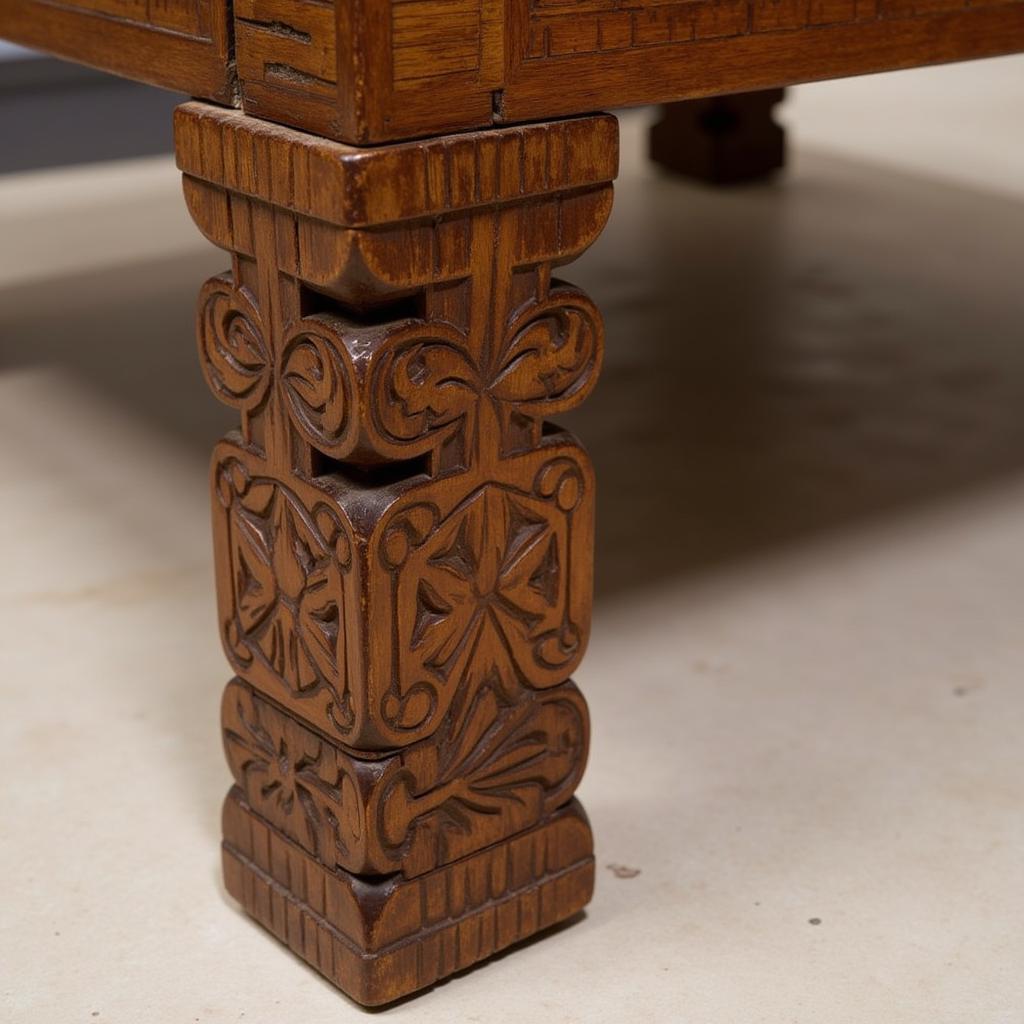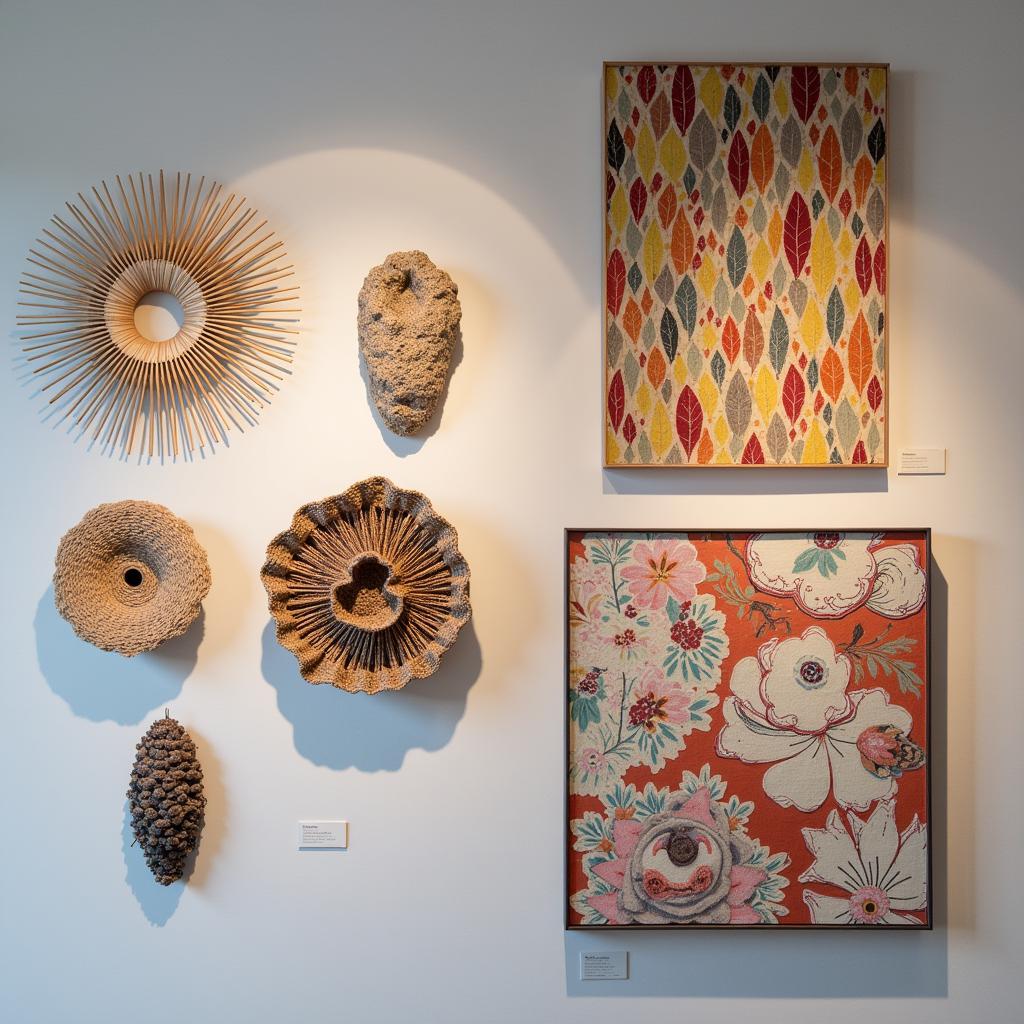Exploring the Beauty of the African Coffee Table
An African Coffee Table can be more than just a piece of furniture; it’s a statement piece, a conversation starter, and a reflection of the rich and diverse cultures of the African continent. Whether you’re looking for a bold centerpiece or a subtle accent, understanding the different styles, materials, and origins of these tables can help you find the perfect addition to your living space.  Hand-carved African coffee table with intricately designed wooden legs, showcasing traditional artistry.
Hand-carved African coffee table with intricately designed wooden legs, showcasing traditional artistry.
Discovering the Diversity of African Coffee Tables
African coffee tables come in a wide array of styles, each reflecting the unique traditions and craftsmanship of different regions across the continent. From the intricate wood carvings of West Africa to the vibrant woven patterns of East Africa, there’s an African coffee table to suit every taste and interior design style. Some tables feature bold geometric designs, while others incorporate natural elements like bone, horn, or stone.
Many tables utilize reclaimed wood, adding a touch of history and sustainability to your home. You might find a table made from salvaged dhow wood from the coast of East Africa, or one crafted from repurposed railway sleepers, each telling a story of its past.
Choosing the Right African Coffee Table for Your Home
What size and shape should you consider for your space? A large, rectangular African coffee table can anchor a spacious living room, while a smaller, round table might be more suitable for a cozy den. Consider the existing furniture and décor in your room. Do you want your African coffee table to blend seamlessly or stand out as a statement piece? Think about the functionality you need. Do you need extra storage space? Some African coffee tables feature drawers or shelves, offering a practical solution for storing books, remotes, and other essentials.
Do you appreciate fair trade practices? Consider purchasing african fair trade products like an African coffee table to support sustainable development and empower local artisans.
The Materials and Craftsmanship Behind African Coffee Tables
The materials used in crafting African coffee tables are as diverse as the continent itself. From rich hardwoods like ebony and mahogany to natural materials like stone, bone, and leather, each material brings its own unique character and beauty to the finished product. The craftsmanship involved in creating these tables is often passed down through generations, ensuring the preservation of traditional techniques and artistic styles. Many tables feature intricate carvings, hand-painted details, or inlaid patterns, reflecting the skill and artistry of the craftspeople.
Perhaps you’re interested in adding a touch of natural beauty to your home with an african amethyst stone rectangle coffee table. The unique color and texture of the stone can create a stunning focal point in any room.
Caring for Your African Coffee Table
Proper care can ensure your African coffee table remains a beautiful and cherished piece for years to come. Dust regularly with a soft cloth. Avoid placing hot items directly on the surface. Use coasters and placemats to protect the finish from spills and scratches. Depending on the material, you may need to apply a protective sealant or wax periodically.
Dr. Anika Nkosi, a renowned expert in African art and design, emphasizes the importance of understanding the cultural significance of these pieces: “An African coffee table is not just furniture; it’s a piece of art that carries the spirit and history of a people.”
What are some popular styles of African coffee tables?
Some popular styles include carved wood tables, tables with woven tops, and tables incorporating natural materials like bone or stone.
Where can I buy an authentic African coffee table?
Authentic African coffee tables can be found at specialty furniture stores, online marketplaces, and directly from artisans and fair trade organizations.
How can I incorporate an African coffee table into my existing décor?
Consider the size, shape, and style of the table in relation to your existing furniture and décor. Choose a table that complements your style and adds a touch of African flair to your space.
Conclusion
An African coffee table offers a unique way to bring the beauty and artistry of Africa into your home. By understanding the different styles, materials, and craftsmanship involved, you can find the perfect piece to enhance your living space and reflect your personal style. Investing in an African coffee table is not just about acquiring furniture; it’s about embracing a piece of art and culture.
FAQ
- What are the most common materials used in African coffee tables?
- How do I clean and maintain my African coffee table?
- What sizes and shapes are available for African coffee tables?
- Where can I find reputable sellers of African coffee tables?
- How much should I expect to pay for an authentic African coffee table?
- Can I customize my African coffee table?
- What are some tips for styling an African coffee table in my living room?
For further information on incorporating African elements into your home, you might be interested in learning more about african caramel madness.
If you have questions or need assistance with your purchase, please don’t hesitate to contact us. You can reach us by phone at +255768904061, email us at kaka.mag@gmail.com, or visit us in person at Mbarali DC Mawindi, Kangaga, Tanzania. Our customer service team is available 24/7. We also have other informative articles like african grey parrot favorite food and african grey parrot healthy foods you might find interesting.


